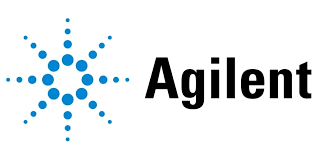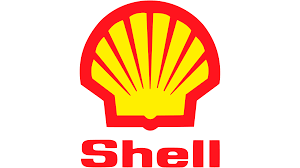Ai In Industrial Automation
Published Date: 02 June 2025 | Report Code: ai-in-industrial-automation
Ai In Industrial Automation Market Size, Share, Industry Trends and Forecast to 2033
This report provides an in‐depth analysis of the AI in Industrial Automation market, covering key technological advancements, industry trends, and a detailed regional performance outlook from 2024 to 2033. It offers insights into market size, growth rates, competitive strategies, and segmentation trends, serving as a comprehensive guide for stakeholders planning future investments and strategic innovations.
| Metric | Value |
|---|---|
| Study Period | 2024 - 2033 |
| 2024 Market Size | $15.00 Billion |
| CAGR (2024-2033) | 12.5% |
| 2033 Market Size | $45.34 Billion |
| Top Companies | Siemens AG, ABB Ltd, Honeywell International Inc., Rockwell Automation |
| Last Modified Date | 02 June 2025 |
Ai In Industrial Automation (2024 - 2033)
Ai In Industrial Automation Market Overview
Customize Ai In Industrial Automation market research report
- ✔ Get in-depth analysis of Ai In Industrial Automation market size, growth, and forecasts.
- ✔ Understand Ai In Industrial Automation's regional dynamics and industry-specific trends.
- ✔ Identify potential applications, end-user demand, and growth segments in Ai In Industrial Automation
What is the Market Size & CAGR of Ai In Industrial Automation market in 2024?
Ai In Industrial Automation Industry Analysis
Ai In Industrial Automation Market Segmentation and Scope
Tell us your focus area and get a customized research report.
Ai In Industrial Automation Market Analysis Report by Region
Europe Ai In Industrial Automation:
Europe is also undergoing significant transformation, with market estimates rising from $3.77 in 2024 to $11.40 by 2033. Favorable regulatory frameworks, strong industrial bases, and a focus on sustainable manufacturing practices are encouraging widespread AI adoption across multiple sectors.Asia Pacific Ai In Industrial Automation:
In the Asia Pacific region, the AI in Industrial Automation market is witnessing impressive growth due to rapid industrialization and increased investments in smart manufacturing. With markets growing from $2.97 in 2024 to an expected $8.96 by 2033, local industries are increasingly adopting automated systems to improve efficiency and product quality. Government initiatives and public-private partnerships further support these developments, with emerging economies leading the digitalization drive.North America Ai In Industrial Automation:
North America remains a dominant force, with market sizes expanding from $5.64 in 2024 to $17.03 by 2033. Advanced technological infrastructure, early adoption of AI technologies, and robust R&D investments are key drivers in the region, promoting rapid industrial automation and innovation.South America Ai In Industrial Automation:
South America’s market is progressing steadily with a growth from $0.98 in 2024 to an anticipated $2.95 in 2033. Although relatively smaller compared to other regions, the increasing presence of multinational corporations and local industry advancements are spurring demand for AI-driven automation processes.Middle East & Africa Ai In Industrial Automation:
In the Middle East and Africa, market growth from $1.65 in 2024 to $4.99 by 2033 is driving renewed interest in AI applications in industrial sectors. Although growth rates are modest, steady investments in infrastructure and modernization initiatives are gradually reshaping the region’s automation landscape.Tell us your focus area and get a customized research report.
Ai In Industrial Automation Market Analysis By Automation Type
Global AI in Industrial Automation Market, By Automation Type Market Analysis (2024 - 2033)
The automation type segment encompasses fixed automation, flexible automation, industrial robots, and hardware solutions. Fixed automation remains a backbone for high-volume, repetitive tasks while flexible systems are designed to adapt to varying production demands. Industrial robots and related hardware are being upgraded with AI capabilities to enhance precision and speed. Integration of these systems is crucial for achieving optimized production lines and reducing operational redundancies in modern industrial environments.
Ai In Industrial Automation Market Analysis By Application
Global AI in Industrial Automation Market, By Application Market Analysis (2024 - 2033)
Application segmentation highlights sectors such as manufacturing, oil and gas, food and beverage, and textiles. Manufacturing dominates with extensive AI deployment to streamline operations and bolster quality control. In the oil and gas sector, AI is pivotal in predictive maintenance and safety monitoring. The food and beverage industry relies on AI to enhance production line efficiency, while the textiles industry benefits from automated quality assurance and inventory management, all contributing to market growth and sector-specific innovations.
Ai In Industrial Automation Market Analysis By Technology
Global AI in Industrial Automation Market, By Technology Market Analysis (2024 - 2033)
Critical technological enablers such as machine learning, natural language processing, and computer vision are redefining industrial automation. Machine learning drives smart analytics and decision-making processes, while natural language processing and computer vision facilitate real-time adjustments and monitoring. Furthermore, the integration of predictive maintenance, quality control, and production optimization systems ensures enhanced operational reliability. These technologies are converging to form an intelligent ecosystem that supports robust automation solutions, driving significant value creation across all industrial segments.
Ai In Industrial Automation Market Analysis By End User
Global AI in Industrial Automation Market, By End-User Industry Market Analysis (2024 - 2033)
The end-user segment is predominantly divided among manufacturing industries, oil and gas sectors, and specialty industries like food and beverage and textiles. Manufacturing facilities are rapidly adopting AI to improve process efficiency and minimize downtime. In the oil and gas industry, the need for safety, efficiency, and real-time monitoring is accelerating digital transformation. Other end-users, such as food and beverage companies, are leveraging AI to optimize production workflows and ensure quality compliance, thereby reinforcing the overall market demand.
Ai In Industrial Automation Market Analysis By Market Component
Global AI in Industrial Automation Market, By Component Market Analysis (2024 - 2033)
The market component segmentation splits into hardware, software, and services. Hardware components include advanced sensors, robotics, and computing devices that form the physical backbone of automation. Software solutions drive process control, data analytics, and real-time monitoring, enhancing operational intelligence. Meanwhile, service offerings encompass installation, maintenance, and consultancy, which ensure smooth technology integration. The synergistic effect of these components is propelling market growth by delivering integrated, scalable, and customized industrial automation solutions.
Ai In Industrial Automation Market Trends and Future Forecast
Tell us your focus area and get a customized research report.
Global Market Leaders and Top Companies in Ai In Industrial Automation Industry
Siemens AG:
Siemens is a global leader in industrial automation and digitalization, integrating advanced AI solutions across manufacturing and process industries to enhance efficiency and productivity.ABB Ltd:
ABB leverages AI-driven robotics and automation systems to drive innovation in industrial applications, providing cutting-edge solutions tailored to meet the evolving needs of various sectors.Honeywell International Inc.:
Honeywell focuses on smart automation solutions by integrating AI into sensor technologies and process control systems, enabling higher reliability and operational insights.Rockwell Automation:
Rockwell Automation is at the forefront of digital transformation in industrial settings, utilizing AI to optimize production processes and improve system efficiencies across industries.We're grateful to work with incredible clients.









FAQs
What is the market size of ai In Industrial Automation?
The AI in Industrial Automation market is projected to grow from $15 billion in 2024, with a compound annual growth rate (CAGR) of 12.5% expected through 2033. This signifies strong demand and integration of AI technologies in various industrial sectors.
What are the key market players or companies in the ai In Industrial Automation industry?
Key players in the AI in Industrial Automation market include major corporations engaged in manufacturing automation, AI software development, and Robotics. Companies such as Siemens, GE, and Honeywell are often recognized for their innovation and market leadership in this sector.
What are the primary factors driving the growth in the ai In Industrial Automation industry?
Key drivers of growth in the AI in Industrial Automation industry include increased efficiency in manufacturing processes, advancements in machine learning applications, greater demand for predictive maintenance, and a strong push towards digital transformation in industrial sectors.
Which region is the fastest Growing in the ai In Industrial Automation?
North America is projected to be the fastest-growing region in AI in Industrial Automation, with a market size expected to expand from $5.64 billion in 2024 to $17.03 billion by 2033, indicating significant investment in automation technologies.
Does ConsaInsights provide customized market report data for the ai In Industrial Automation industry?
Yes, ConsaInsights offers customized market report data for the AI in Industrial Automation industry, allowing businesses to obtain tailored insights and analysis relevant to their specific needs and strategic objectives.
What deliverables can I expect from this ai In Industrial Automation market research project?
Deliverables from the AI in Industrial Automation market research project typically include detailed market analysis reports, segment data, competitive landscape insights, trend analysis, and potential growth opportunities across various regions and application areas.
What are the market trends of ai In Industrial Automation?
Key market trends in AI in Industrial Automation include increased adoption of machine learning and predictive analytics, rising investment in industrial robotics, and the growing emphasis on IoT integration to enhance operational efficiencies and data-driven decision-making.
